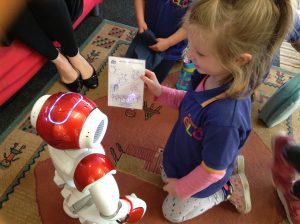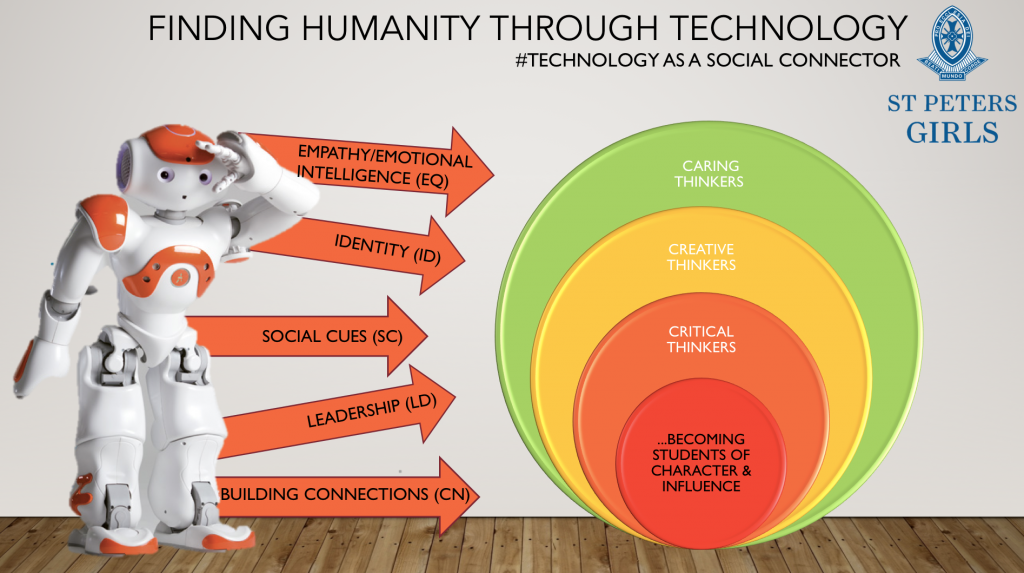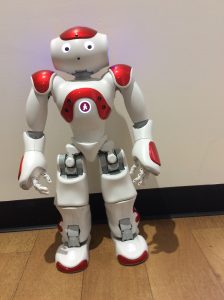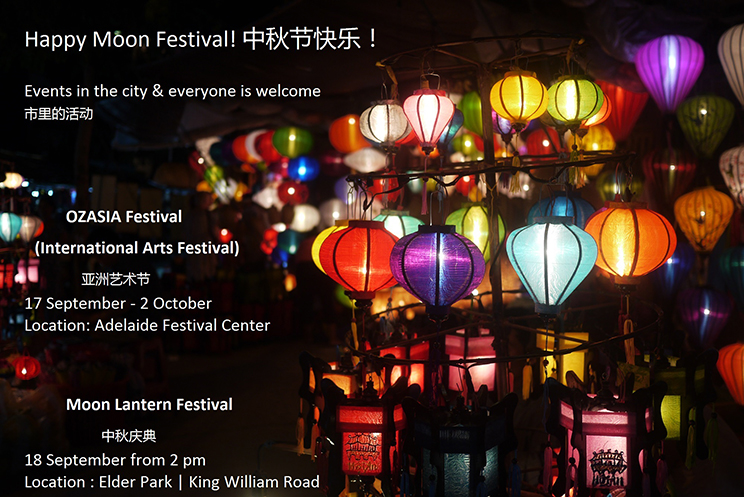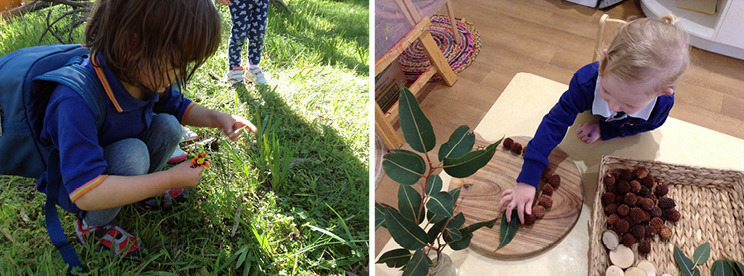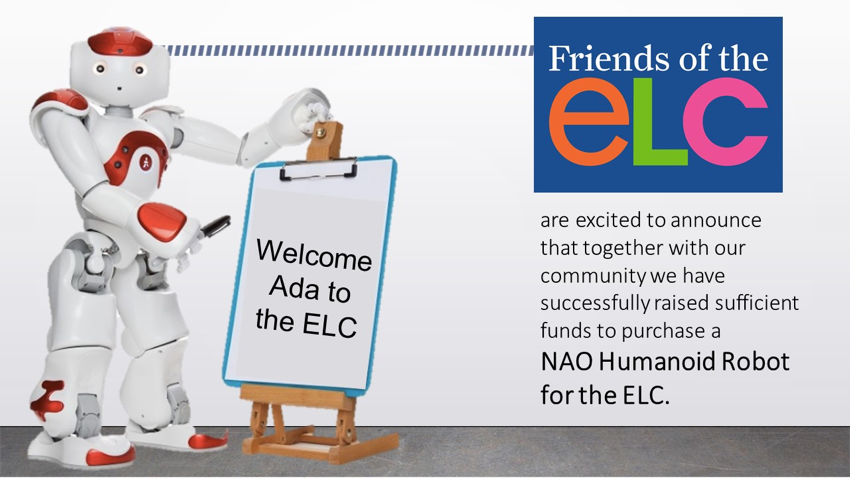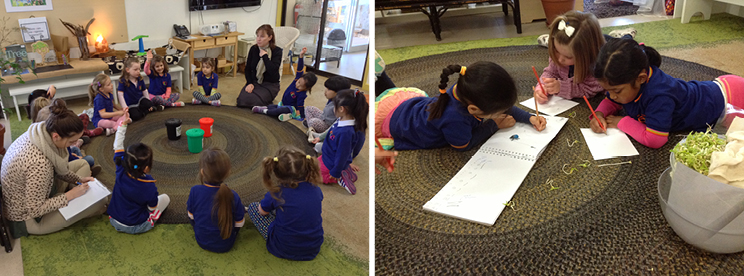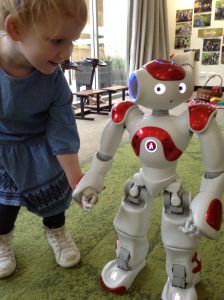From the Director of Early Learning
Dear Families,
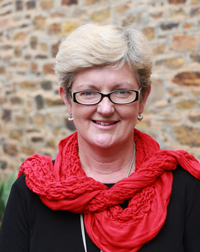
As the term concludes we reflect on the journey travelled over recent months. Our mid-year transitions went incredibly well and I would like to thank all the staff and families involved in this important process. They appeared seamless, which means that our children feel comfortable in rooms other than their own and have developed some predictability about the journey they will travel whilst at ELC. The children and their families are demonstrating trust in us, our decision making, our guarantee of a seamless learning pathway, and of the sharing of information from one room to the next. As a team, we will consider all the elements that set us up for success in this process and work on any areas we can improve.
Clearly the children benefit from this process, which means we can continue the learning in a way that builds on from the term prior. In fact, this year we have been very strategic in our PYP units of inquiry, planning each one so that they connect with our overarching idea of making a difference to the world in which we live in. I have been very impressed with the depth of research that has occurred in each room and how this was communicated to families at our recent Parent Teacher Conversations. Thank you to all the families who took time to share with the educator’s news of their child’s progress this semester.
Staffing 2017
We are very excited to announce that Mrs Mel Baulderstone will be joining the ELC as one of our teachers in 2017. Mel is a highly experienced Early Childhood educator and will bring a wealth of knowledge to this role including experience in implementing both PYP and the Reggio Emilia Principles.
Mrs Sarah Croston-Melling will be leaving us at the end of the year. Sarah has had two years as key teacher in the Hallett Room and she will be dearly missed by us all. We wish Miss Laura Trueman farewell at the end of Term 3. Laura will be commencing her final practicum before becoming a fully qualified teacher. We thank Laura for her quality contributions to the ELC over the past two years. Miss Emma Veitch returns from her leave as Laura’s replacement as key co-educator in the Stonyfell Room.
Mrs Kirsty Porplycia will extend her working days across the centre next year. Working four days a week, Kirsty will spend extended morning blocks of time in the Hallett Room working alongside Pam Foden. This teaching structure will provide additional curriculum for our Hallett children. Kirsty will spend the remainder of her time in her existing role as support to me across the centre and will also be leading the robotics program in 2017.
2017 Room Teachers
Stonyfell: Miss Laura Reiters
Bell Yett: Mrs Leanne Williams/Mrs Nell Tierney
Ferguson: Mrs Mel Baulderstone
Hallett: Ms Pam Foden (Full time)/ Mrs Kirsty Porplycia (four mornings a week)
I wish everyone a lovely school holiday break and look forward to welcoming you back for Term 4 on Monday October 17.
Kate Mount
ELC Dates for the Diary
- Christmas Twilight Picnic: Friday November 25
- ELC Hat Ceremony: Monday December 5
- Christmas Vacation Care Dates: Monday December 12 – Friday December 23
- Centre closed: Monday Dec 26 – Friday January 6
- Centre reopens: Monday January 9, 2017.
2017 Enrolments now Finalised!
We wish to advise families that our 2017 enrolments and movements have now been finalised. Each room is now at its capacity with room numbers and ratios. We appreciate that many families have requested change of days due to work commitments. Where possible we have tried to meet these requests, however we no longer have any flexibility.
Please contact Sarah Elliott on selliott@stpetersgirls.sa.edu.au if you wish to be placed on a waitlist for 2017 regarding any change of day for your child’s schedule.
Reflections from the Stonyfell Room
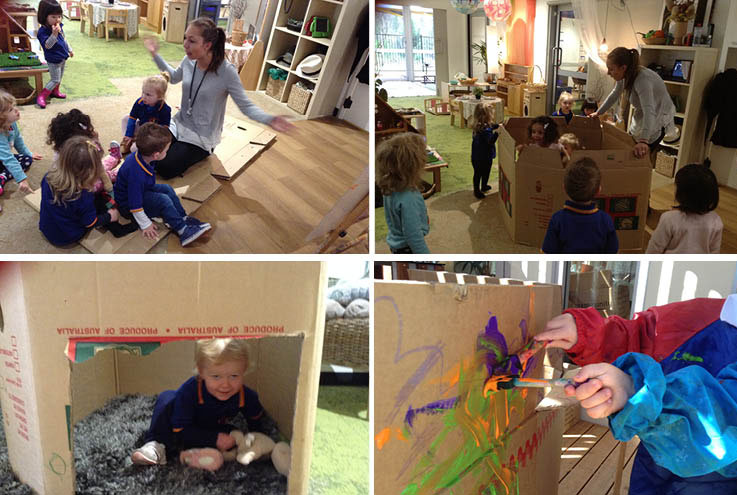
As we come to the end of the term we reflect on the 10 weeks we have had together – growing, learning and exploring. We have welcomed and settled in our new children and as a team of educators we feel that we have developed strong and trusting relationships. We appreciate the communication and support from all our families and have loved the time that we have had together to discuss and share the progress and learning of the children.
This term we have really unpacked and explored our Unit of Inquiry Central Idea:
“People are connected to our planet”
I enjoyed sharing this journey with many of you during our Parent Teacher Conversations and showing examples from your child’s ePortfolio.
We began our exploration with building our connection of home to ELC.
We engaged in experiences:
- exploring our homes
- sharing our thoughts and ideas around homes
- what we know about our homes
- other spaces and places we have relationships to.
This progressed into thinking about how we can begin to take responsibility for our belongings and resources. The teachers wanted our children to begin to understand that we don’t necessarily have an endless supply of resources and materials and that we need to take responsibility for what we have. This has led us to explore and use recycled materials in our everyday practice. Using these materials has allowed us to build our understanding of sustainability. We have empowered our children to transform unwanted items into something new, extending their life and giving them new value and meaning. In doing this our children have been demonstrating their imagination and creativity. Many of our explorations have allowed children to work in collaboration, supporting the development of their social skills such as sharing, turn taking and valuing others ideas.
One experience has been the development of our castle. I am sure many of you have seen the large box that we have had in the Stonyfell Room over the past five weeks. This box was offered as a provocation and was placed in the room for the children to explore. The box began its life at a fruit and veg shop containing watermelons, however our children saw more than just a box. It became a boat that they laid flat and sat on, rowing it down a river. The box then evolved as more children engaged with it and the idea of it being a castle was suggested. The children had to problem solve how they could get into the castle as when it was standing up it was too tall to climb into; it was suggested that I cut a door!
It is through this inquiry we have supported our children to take action in caring for the planet. This action demonstrates the understanding that the Stonyfell children have of being active participants and responsible citizens of the world. We will continue this practice in the Stonyfell Room and we want it to become embedded in our everyday practice and part of the ELC culture.
The Stonyfell team would like to thank all the families that have participated in this inquiry by providing us with a wonderful supply of recycled materials that we have greatly valued and used in many experiences.
Laura Reiters
Reflections from the Bell Yett Room
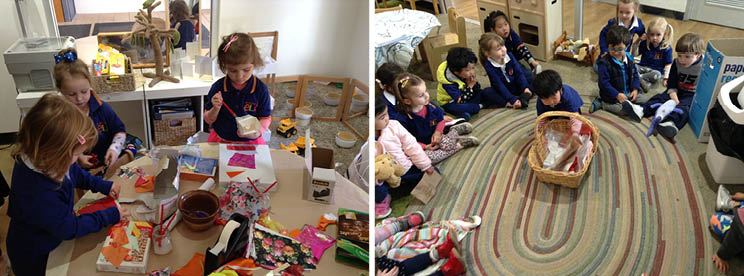
We began our inquiry this term with very clear learning outcomes. These included the development of specific knowledge, skills, attitudes and concepts as the children explored the Central Idea, ‘People are connected to their planet’. More broadly, we were aiming for the children to develop a relationship with their natural world that would inspire some sustainable practices. This was left fairly open as we wanted to follow the children’s ideas and theories.
Through our early observations, we discovered that although the children knew that rubbish could be a problem, there was room to deepen their understandings. Many children believed that they did not have rubbish in their homes. During our walks in Ferguson Park, some children thought that leaves and sticks on the ground were rubbish. As we entered the ‘action’ stage of our inquiry we wanted to ensure that we were offering opportunities for learning that would be ongoing for the children, so they would continue to take action even after our inquiry had ‘finished’.
We decided to relaunch our inquiry with a specific focus on investigating rubbish. This was a turning point for the children’s understanding as they started to create connections between their relationship with the planet and their actions. We began by exploring the rubbish bins in the ELC, with the children taking a particular interest in our paper recycle bin. It was while investigating this bin that we were provided with a provocation by the Property Services Team. They informed us that there was a problem throughout the School, as people were putting the wrong rubbish in the recycle bins.
We examined the bin more closely and discovered that there was a tick and a cross on the bin which told us what rubbish could and could not go in the bin. We conducted an audit on our bin and discovered that we were putting some of the wrong type of rubbish in this bin. The children began working together in small groups to deepen their understandings and share their emerging theories.
By providing the children with a wide range of learning invitations, they have not only deepened their knowledge of recycling but have also developed and tested a theory – rubbish does not always need to go in the bin or be recycled – it can be reused. These small group experiences have also supported the children in developing essential attitudes such as cooperation, empathy, respect and social skills, including: accepting responsibility, respecting others, adopting a variety of group roles and group decision-making.
We are excited to be continuing our ‘Rubbish’ Investigation into next term as we explore how we can share our new recycling knowledge with the ELC community, including Ada our Humanoid Robot and the wider school.
Leanne Williams and Nell Tierney
Reflections from the Ferguson Room
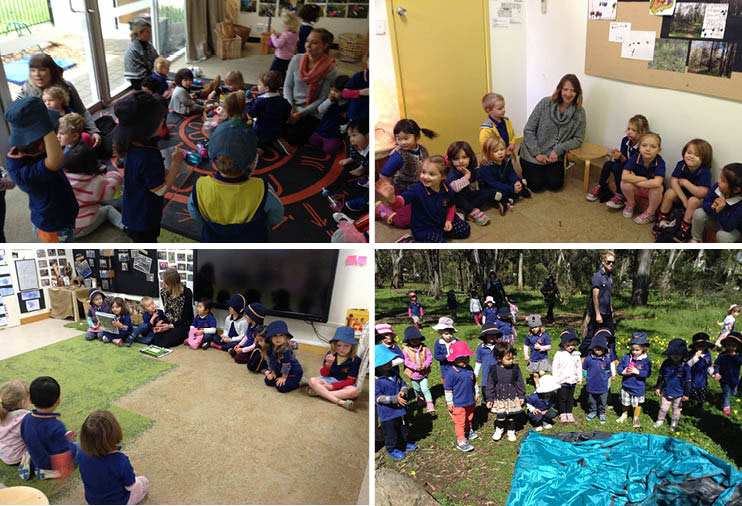
Here we are at the end of Term 3! I want to start with a thank you for all of your wonderful support throughout the term. We have seen the evidence of how partnerships with families extend and promote each child’s journey at the ELC. Having the opportunity to discuss your child’s journey with you at the Parent Teacher Conversations has highlighted the importance of this communication.
Our intention when we planned our Central Idea of ‘People are connected to their planet’ was to encourage the children towards an action that was initiated from their understandings and knowledge of the inquiry.
With a strong sense of empathy and connection to their world, we ‘aspired’ to develop the children’s desire to really make a difference and to understand that they do and can make an impact on the world. As the IB focus is to develop global citizens, we are building the foundations through informed choices that show respect and responsibility for their world.
For the children, the importance of staying on pathways in Ferguson Park created enough reason to demonstrate action.
“Other rooms go into the park too.”
“And playgroup.”
“They might not know that we have to stay on the paths!”
“They might not know we are making a path.”
Due to a small sense of despair at the possibility of damaged spider orchids, squashed scorpions and millipedes, the children wanted to make sure the other rooms knew about the pathways.
Our path building will continue into Vacation Care and Term 4, as we test more of the theories we are forming each week. In this case, we are ensuring children are developing persistence in seeing that action continues over an extended period of time, just as our care towards the world never ends. What an exciting time ahead!
Pam Foden
Reflections from the Hallett Room
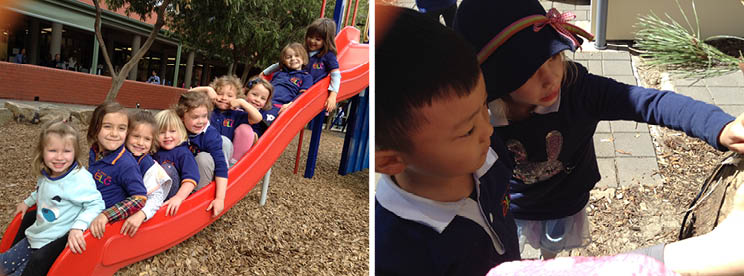
Having spoken to almost all of the Hallett families last week, I feel a new sense of warmth in the room. It is so wonderful to have the time to build our home to ELC relationship. We value our parent community voice and these meetings help us to understand your child so much better. We hope that our conversations have also increased your understanding of your child’s participation in our ELC community.
There have been many highlights this term, but I am most impressed with the increased level of empathy that the children have achieved. The children are expressing this in various ways such as being more understanding of, and kind to friends, caring for their planet and animals. The children have taken a particular interest in caring for animals through rebuilding their homes. One of the provocations we had this term was a wooden birdhouse that fell from a tree in one of the storms we have had recently. The children decided to decorate the birdhouse before having it remounted on the tree. However, the children’s empathy is so deep that they wish to seek the advice of the birds about how they would like it decorated. The children wish to create bird noises to attract and talk to the birds to find out their ideas. They also made some beautiful coloured birds to attract their attention. I can’t wait to hear how the bird conversation goes and to see how the bird house will be decorated this week.
I have seen many children helping their peers and trying to be more understanding of each other. However, the Hallett Room is full of social learning. As the children’s confidence has grown so much, they are more willing to take risks and experiment with various forms of social engagement that they may not have previously experienced. This often results in facing challenges that they have not had before. As educators, we are very aware of the growth in social development and the support that this requires to find appropriate ways to disagree, to be able to choose their own path, but to also be mindful of the group. At the moment we are focusing on social skills, in particular, how to communicate with peers. This includes the use of language, the tone and volume we use when we speak to our friends, and how we can solve problems. We have been sharing stories and role playing many scenarios with puppets as well as talking with the children, to help them see each other’s point of view and to model ways that they could solve their problems.
Finally, we have been building a sense of connection with each other through taking responsibility together for our environment and also through exploring dance. Inspired by the ‘We Are All Connected’ dance video that I shared in a previous ELC eNews article, some of the Hallett children have been learning some hip hop dance with Miss Simmitis, one of the co-educators in the Bell Yett Room, who is a talented hip hop dancer/teacher. The children have loved learning a dance together, building co-ordination and creating a bond, as they are motivated to help each other learn the moves. It has been wonderful to see their confidence and enthusiasm grow over several weeks. The dance is to the music of Meghan Trainor’s ‘Better When I’m Dancing’. We feel better when we are dancing!
Sarah Croston-Melling
Magic Moment
